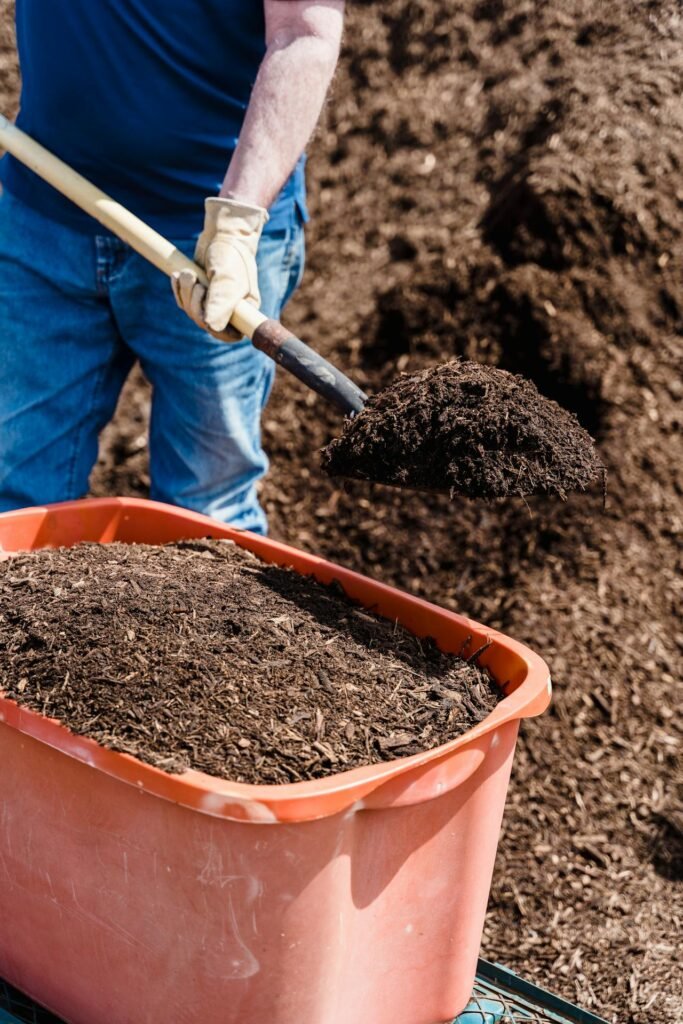Composting is one of the most effective ways to reduce kitchen waste while enriching your garden soil. Instead of tossing food scraps into the trash, composting allows you to transform organic materials into nutrient-rich soil that boosts plant health and growth. It’s a simple, eco-friendly practice that anyone can do, whether you have a small backyard or live in an apartment.
The Basics of Composting
Before getting started, it’s important to understand what composting is and how it works. Composting is a natural process where organic materials decompose over time, breaking down into a dark, rich substance called humus. Microorganisms, worms, and fungi help speed up this decomposition, converting waste into valuable fertilizer.
Why Compost?
Composting benefits both the environment and your garden. It reduces landfill waste, decreases methane emissions, and improves soil structure. Additionally, compost introduces essential nutrients into the soil, helping plants thrive while reducing the need for chemical fertilizers. With regular composting, you’ll also notice healthier plants, improved water retention in soil, and fewer household garbage odors.
How Does Composting Work?
Composting requires four essential elements: green materials, brown materials, air, and moisture. Green materials provide nitrogen, which helps with the breakdown of organic matter. Brown materials supply carbon, which balances nitrogen levels and aids decomposition. The right amount of air and moisture ensures that microorganisms remain active and continue the breakdown process efficiently.
What Can and Can’t Be Composted?
Not all kitchen and garden waste is suitable for composting. Knowing what to include and what to avoid is crucial for maintaining a healthy compost pile.
Green Materials (Nitrogen-Rich)
Green materials decompose quickly and provide nitrogen, which fuels microbial activity. Some excellent sources of nitrogen include:
- Fruit and vegetable scraps
- Coffee grounds and filters
- Grass clippings
- Tea bags (without plastic parts)
- Eggshells
- Plant trimmings
Brown Materials (Carbon-Rich)
Brown materials break down slowly and help balance moisture in the compost pile. Examples of carbon-rich materials include:
- Dried leaves
- Shredded newspaper or cardboard
- Straw and hay
- Wood chips and sawdust (from untreated wood)
- Paper towels (if not contaminated with chemicals)
What to Avoid
Some materials can attract pests, produce foul odors, or introduce harmful bacteria. Avoid composting the following:
- Meat, dairy, and oily foods
- Pet waste
- Diseased plants
- Plastic, metal, or glass
- Treated wood products
Setting Up Your Compost Bin
A well-maintained compost bin ensures efficient decomposition and minimal odor. There are several composting methods, so choose one that best fits your lifestyle and available space.
Choosing a Composting Method
There are multiple ways to compost, each suited to different needs:
- Traditional composting: Involves an outdoor compost pile or bin where materials are layered and turned regularly.
- Vermicomposting: Uses worms (typically red wigglers) to break down organic waste into nutrient-rich worm castings.
- Bokashi composting: A fermentation-based process that involves anaerobic breakdown of waste using a special bran mix.
- Tumbler composting: A convenient option that uses a rotating drum to speed up the decomposition process.
Selecting a Location
Place your compost bin in a well-drained, shady area with good air circulation. Keeping it close to your kitchen makes it easy to add food scraps, while a water source nearby can help maintain the right moisture levels.
How to Build a Compost Pile
A successful compost pile requires layering materials properly and maintaining the right balance of nitrogen and carbon.
- Start with a layer of brown materials like dried leaves or shredded newspaper to create a base.
- Add a layer of green materials such as fruit scraps and coffee grounds.
- Alternate layers of brown and green materials, ensuring a 2:1 ratio of carbon to nitrogen.
- Keep the pile moist but not soaking wet, as too much moisture can slow down decomposition.
- Turn the pile regularly to aerate it and speed up the breakdown process.
Maintaining Your Compost Pile
Once your compost bin is set up, regular maintenance ensures the process runs smoothly. Properly managing temperature, moisture, and aeration will lead to rich, crumbly compost in a few months.
Balancing Green and Brown Materials
A healthy compost pile requires the right mix of nitrogen and carbon. If your pile smells bad, it may have too many green materials—add more browns to balance it out. If decomposition is slow, try adding more greens and aerating the pile.
Turning and Aerating the Pile
Oxygen is essential for the breakdown process. Turning your compost pile every one to two weeks ensures even decomposition and prevents foul odors. If you’re using a compost tumbler, rotating it a few times a week will keep everything well-mixed.
Managing Moisture Levels
Your compost pile should be as moist as a wrung-out sponge. If it’s too dry, add water or green materials. If it’s too wet, mix in more brown materials like shredded paper or dry leaves.
When and How to Use Finished Compost
Once your compost turns into dark, crumbly soil with an earthy smell, it’s ready to use. Depending on the method and environmental conditions, compost can take anywhere from a few months to a year to fully mature.
Identifying Finished Compost
Mature compost has a uniform texture and no recognizable food scraps. It should smell rich and earthy, not rotten or sour. If large chunks remain, sift them out and return them to the compost bin for further breakdown.
Applying Compost in Your Garden
Use your finished compost to enrich garden beds, potting soil, and even lawns. Here are some common ways to apply it:
- Mix into garden beds before planting to improve soil fertility.
- Top-dress lawns by spreading a thin layer over grass.
- Use as mulch around trees and plants to retain moisture.
- Make compost tea by soaking compost in water and using the liquid as a natural fertilizer.
Storing Excess Compost
If you produce more compost than you need, store it in a covered bin or pile until it’s needed. Keep it slightly moist and aerated to prevent it from becoming compacted or overly dry.
Common Composting Problems and Solutions
Even with proper care, composting can sometimes run into issues. Here’s how to troubleshoot common problems:
- Bad odors? Add more brown materials and turn the pile to improve aeration.
- Too dry? Sprinkle water and mix in more green materials.
- Pests or rodents? Avoid adding meat and dairy and keep the compost bin covered.
- Slow decomposition? Chop materials into smaller pieces and turn the pile more frequently.
Conclusion: Transform Waste into Garden Gold
Composting is a rewarding practice that turns kitchen scraps into nutrient-rich soil for your garden. By following these steps, you can reduce household waste, improve soil health, and contribute to a more sustainable environment. Whether you’re composting in a backyard bin or using a small indoor system, every effort makes a difference. Start composting today and watch your waste transform into garden gold!

